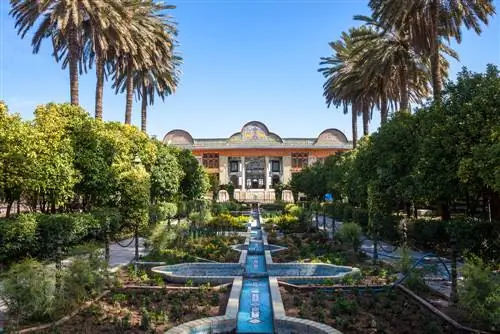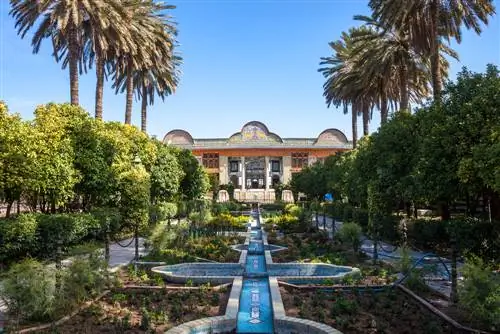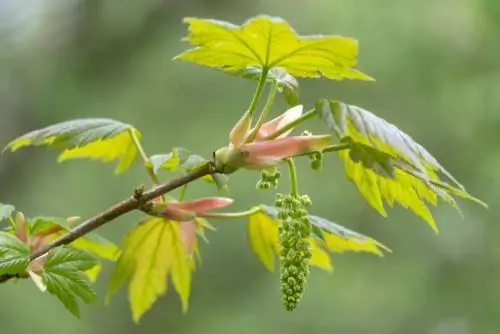- Author admin [email protected].
- Public 2023-12-16 16:46.
- Last modified 2025-01-23 11:22.
A garden of our own: This longing has accompanied us as humans ever since we settled down. We dedicate this article to the exciting story of how our gardens for recreation and decoration emerged from purely functional gardening.

How did the history of the garden develop?
The history of the garden ranges from the strictly geometric gardens of ancient civilizations to the magnificent Persian garden paradises to the first allotment gardens in the 19th century, which enabled both relaxation and self-sufficiency.
The ancient civilizations
Arranged strictly geometrically and demarcated with hedges or stones, the ancient Egyptians defied valuable land from nature. Fruit trees and vines were primarily planted in these gardens. In Greece, the plots of land that were also fenced in were smaller. The repertoire of cultivated plants is more diverse: in addition to apples, figs, wine and olives, vegetables are also grown. Groves of trees were often found near a holy spring, which served as the first pleasure gardens for relaxation.
The gardens in ancient Rome combined the elements of ornament and nutrition. Among other things, medicinal herbs were cultivated in them for personal use. Roman gardens with their lush greenery benefited from a reliable water supply that was unparalleled at the time.
The legendary Persian gardens
The Persian king and general Cyrus II the Great had a garden paradise built in each of his numerous palaces as a private place of peace, but also as a symbol of his power. In them, the play of light and shadow in connection with water, colorful seas of flowers, carefully designed hedges and palm trees has been perfected.
The Garden under Charlemagne
When Charlemagne had the “Capitulare de villis” set up, he brought the agricultural use of the gardens back into the foreground. As a result, previously unknown varieties of fruit and vegetables are cultivated in the medieval monastery gardens. The intensive study of the medicinal plants and aromatic herbs that are also grown here produceshealers such as the monastery Hildegard von Bingen, whose findings are still valid today.
Strolling in the Renaissance and Baroque Garden
In the 15th century the garden becomes the entrance to the house, which is through
- Stairs,
- Path axes
- flowering borders
invites you to take a stroll. This well-thought-out form of investment continued to increase in the Baroque period. A famous example is the gardens of Versailles, which in their size and beauty are a symbol of the power and we alth of the absolutist ruler.
The followers of the Enlightenment want to free the garden from the strict regulations of humans. The English-style facilities are characterized by elevations, free-growing trees and spacious lawns crossed by watercourses.
The Modern Times
In the 19th century, the gardens became an overall concept that incorporated not only ecological but also agricultural and forestry aspects. The first allotment gardens are being built in Leipzig, allowing citizens to escape from their cramped apartments. At the same time, the small plots serve for self-sufficiency with fresh fruit and vegetables.
Tip
Germany is the country of allotment gardeners. Almost 950,000 hobby gardeners devote themselves to growing fruit and vegetables in their rented land. It is an open space that has high biological value and provides a home for numerous animal species. Impurities and pollutants from cities are filtered through the foliage and greenery that thrives here.






